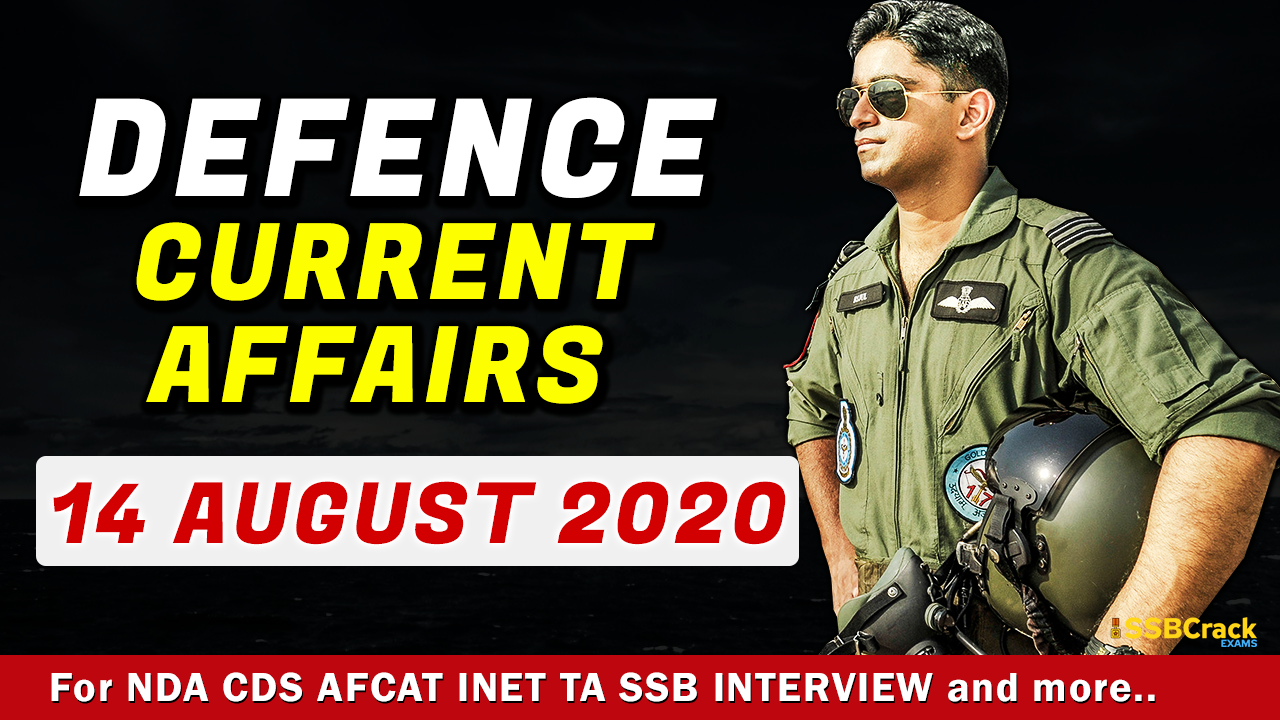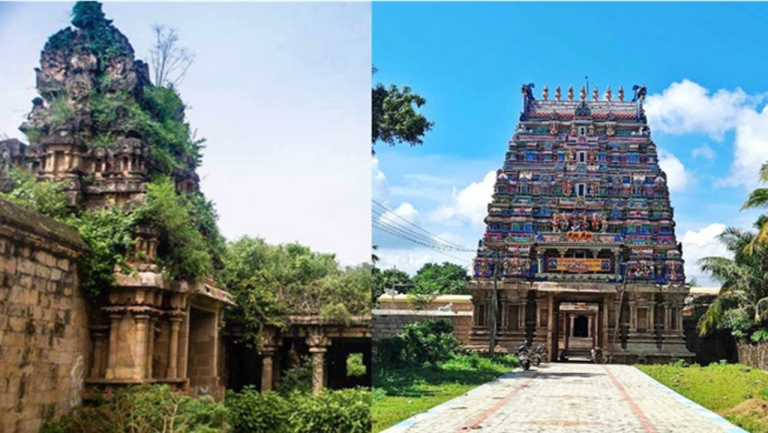CAS Visits Air Base in Western Air Command
- Air Chief Marshal RKS Bhadauria PVSM AVSM VM ADC, Chief of Air Staff (CAS) visited a frontline air base in Western Air Command on 13 Aug 20.
- On his arrival, the CAS was received by the Air Officer Commanding (AOC) of the base who briefed him on the readiness and operational status of the lodger units located at the base.
- During the day long visit, the CAS reviewed the operational preparedness of the base and interacted with air warriors serving on the frontlines. The CAS urged the air warriors to maintain the highest standards of readiness.
- He also appreciated their efforts in preserving IAFs combat potential during the ongoing COVID 19 pandemic.
- Earlier in the day, the CAS flew the Mig 21 Bison with the resident squadron.
Vice Admiral Dinesh K Tripathi, AVSM, NM, Assumes Charge as Director General Naval Operations (DGNO)
- Vice Admiral Dinesh K Tripathi, AVSM, NM has assumed charge as Director General Naval Operations today, on 13 Aug 20. He is an alumnus of National Defence Academy Khadakwasla and was commissioned in the Navy on 01 Jul 85.
- The Flag Officer is a specialist in Communication and Electronic Warfare and has served on frontline warships of the Navy as Signal Communication Officer and Electronic Warfare Officer, and later as the Executive Officer and Principal Warfare Officer of Guided Missile Destroyer INS Mumbai.
- A graduate of Defence Services Staff College, Wellington, where he was awarded the Thimmaiya Medal, Vice Admiral Dinesh K Tripathi has attended Naval Higher Command Course and Naval Command College at the US Naval War College, Newport, Rhode Island in 2007-08, where he won the Prestigious Robert E Bateman International Prize
- He has commanded INS Vinash, INS Kirch and INS Trishul and has held various important operational and staff appointments which include Fleet Operations Officer of the Western Fleet at Mumbai, Captain (Naval Operations), Cmde (Network Centric Operations), Principal Director Naval Plans, and Assistant Chief of Naval Staff (Policy and Plans) at Naval Headquarters.
- The Flag Officer has commanded the Eastern Fleet from 15 Jan 18 to 30 Mar 19. On promotion to the rank of Vice Admiral in Jun 19, he was appointed as the Commandant of the prestigious Indian Naval Academy at Ezhimala, Kerala. The Academy was awarded the President’s Colour in Nov 19 by the Supreme Commander of the Armed Forces.
- The Flag Officer is a recipient of Ati Vishisht Seva Medal and Nausena Medal for devotion to duty. He is a keen Student of International Relations, Military History, and art & science of Leadership.
Indian Coast Guard Offshore Patrol Vessel ‘Sarthak’ launched
- An Offshore Patrol Vessels (OPV) for the Indian Coast Guard was launched and re-christened as Indian Coast Guard Ship ‘Sarthak’ by Ms. Veena Ajay Kumar, wife of Defence Secretary Dr Ajay Kumar today. The launching ceremony at Goa Shipyard Limited, GSL, Yard 1236, was conducted through video conferencing from Coast Guard headquarters at New Delhi, while adhering to GoI protocol on global pandemic COVID-19. Defence Secretary, Dr Ajay Kumar; Director General Indian Coast Guard Shri K Natarajan; Chairman & Managing Director, M/s GSL and senior officials of MoD were present.
- OPV Sarthak is the 4th in the series of five OPVs. It has been designed & built indigenously by M/s Goa Shipyard Limited (GSL) in line with the Prime Minister Shri Narendra Modi’s vision of ‘Make in India’. The Ship is fitted with state-of-the-art Navigation and Communication equipment, sensor and machinery. The 105 Metre ship displaces approximately 2350 tons and is propelled by two 9100 KW diesel engines designed to attain a maximum speed of 26 knots, with an endurance of 6000 Nautical Miles. The sustenance and reach, coupled with the latest equipment and system, provides her the capability to perform the role of a command platform and undertake tasks to fulfill the Coast Guard charter. The ship is designed to embark and carry a twin-engine helicopter, four high speed boats and one inflatable boat for swift boarding and Search & Rescue operations. The ship is also capable of carrying limited pollution response equipment to undertake oil spill pollution response at sea.
- Commending the Indian Coast Guard and M/s GSL for this initiative of launching through digital means, Dr Ajay Kumar said that it was reassuring to witness the growing strength of Indian Coast Guard, and capabilities of Indian Shipbuilding industry, a strong supporting pillar for production and maintenance of ships of Indian Maritime Forces. He also commended the professionalism of Goa Shipyard in meeting the timelines of the contract despite the pandemic COVID-19.
- Speaking on the occasion, DG ICG Shri K Natarajan, said that today’s launching marks an important milestone for any ship since she touches the water for the first time, the place where she belongs through her entire service life. He also brought out that the mere presence of Indian Coast Guard unit at sea serves dual objectives of “Deterrence” and “Reassurance”. It deters people with ill-intent and at the same time reassures maritime community, who look up to Indian Coast Guard as “Saviours at sea”, as they are aware that Indian Coast Guard will swiftly respond to any distress call or life-threatening situation at sea. He conveyed his appreciation to CMD, GSL and Coast Guard Refit and Production Superintendent (Goa) and their teams for their dedicated efforts which culminated in launching of this majestic ship.
- Indian Coast Guard has been a pioneer in inducting indigenous assets which has enabled it to remain operationally available throughout the year. The ship launched today, has about 70% indigenous content, thus providing the necessary fillip to the Indian shipbuilding industry and a giant leap towards achieving ‘Atmanirbar Bharat’.
- The ship will be deployed extensively for EEZ surveillance, Coastal Security and other duties as enshrined in the Coast Guard charter of duties, to safeguard the maritime interests of the Nation. In addition to the 05 OPV project, 52 ships are at various stages of construction at different Indian Shipyards and 16 Advanced Light Helicopters are under production at M/s HAL, Bengaluru, which will provide the added strength to the surveillance capabilities of Indian Coast Guard to deal with the dynamic maritime challenges.
- True to its motto “Vayam Rakshamah” meaning “We Protect”, Indian Coast Guard has to its credit of saving about 9730 lives at sea, 12500 lives as part of assistance rendered to Civil authorities and undertook 400 Medical evacuations. Indian Coast Guard saves one life every second day at sea. The deterrence created by the Indian Coast Guard is not limited to the Indian waters, but collaboration with friendly littoral states as per provisions of bilateral cooperation agreements resulted in successful apprehension and seizure of drugs in Indian Ocean Region (IOR). The real time information sharing, close coordination and understanding between ICG and other International agencies has been the key success of these operations. The hawk eye vigil by the Indian Coast Guard of the Indian Exclusive Economic Zone (EEZ) has ensured seizure of Rs. 6800 Crore contraband. Indian Coast Guard remains committed to ensure ‘Safe, Secure and Clean seas’ around the Indian subcontinent.
Raksha Mantri Shri Rajnath Singh launches 15 products developed by Defence PSUs and OFB; MoD continues Atma Nirbhar Bharat Week Celebrations
- Raksha Mantri Shri Rajnath Singh launched here today four products each by OFB and BEML, two by BEL and one each by HAL, BDL, MDL, GRSE and GSL, developed by respective DPSUs/ OFB as part of ‘Atma Nirbhar Bharat’ week celebrations which continues till tomorrow, the 14th August 2020. Chief of Defence Staff, General Bipin Rawat, Defence Secretary Dr Ajay Kumar, Secretary Defence Production Shri Raj Kumar and senior officers from DDP were present. CMDs of DPSUs and Chairman, OFB participated in the event through video conference links. Addressing them, Shri Rajnath Singh said, “Self-reliance in defence manufacturing is one of the key objectives of the ‘Atma Nirbhar Abhiyan’.
- He expressed confidence that the drive for “ATMA NIRBHAR BHARAT” to realise the goal of self-reliance would give the necessary impetus to India’s defence production. “The concerted efforts being put in by Department of Defence Production, Ministry of Defence, to streamline the procurement procedures, production policies and indigenization initiatives would assuredly lead to the development and manufacture of indigenous defence products bringing down our dependence on imports thereby restricting outflow of Foreign exchange, encourage development of domestic Industry, insulate India from external pressure and ensure lifetime spares and service support to the defence equipment,” he added.
- Referring to corporatization of OFB, Shri Rajnath Singh said “if government owned defence industries are to compete at national and international level then the outdated practices will have to be done away with. We need to have modern management techniques, technology infusion and collaborative efforts to help aid the state defence industries serve the country efficiently. With this purpose the government has initiated steps towards Corporatisation of OFB . I am sure this step will not only help remove the constraints of controlled pricing but will also infuse corporate management practices and efficient systems. I understand that it will be a challenge for OFB to reinvent itself, but I hope they will succeed in it.”
- Among the products launched today included the prototype of Nag Missile Carrier (NAMICA) developed by Ordnance Factory Medak in association with DRDL, Hyderabad. NAMICA has the potential for import substitution to the tune of Rs. 260 Cr in the first phase, which may go upto more than Rs 3000 Cr. The other products of Ordnance Factory Board such as the fully indigenous 14.5 mm Anti Material Rifle being manufactured with the existing facilities at Ordnance Factory Trichy, the upgraded Commander’s Thermal Imager Cum Day Sight for T90 Main Battle Tank and the prototype of 8.6×70 mm Sniper developed by Rifle Factory Ishapore for engaging long range targets, were also launched.
- Raksha Mantri appreciated BEML for the products launched today saying their endeavours towards indigenization and reduction in imports are impressive. He said “The 150 Ton payload capacity Dump Truck, one of the biggest Electric Mining Dump Trucks, and Super Giant Mining Excavator of 180 Ton Capacity, both indigenously designed and manufactured with cost benefit of over 20% than the imported equipment and with expected foreign exchange savings of Rs. 1500 Crs and Rs. 220 Crores respectively are true ‘atma nirbhar’ products.” He said “‘GAUR’, the BEML Medium Bullet Proof Vehicle built on a high mobility chassis, with impressive features and customizable protection levels and custom built Heliportable 100 HP Dozer, with very high indigenization levels of 85 % and 94% respectively, are remarkable products.”
- The roll out of the 150th Do-228 aircraft by Hindustan Aeronautics Limited, HAL, is a milestone in the indigenous manufacture of the proven platform. The christening of the 150th aircraft as IN-259 and customising it as a dedicated platform for Indian Navy in the Maritime Reconnaissance & Intelligence Warfare role is a true reflection of the technical prowess of HAL. Further, HAL and IISc have joined hands to establish a Skill Development Center at IISc’s Challakere campus in Karnataka. The goal of this Center is to create a model facility that would provide skill development programmes for various beneficiaries ranging from local community members to high-end engineering professionals in line with the “Make in India” Mission.
- The Linear Variable Differential Transducer fully designed and developed by BEL, which is critical to attain accuracy & precision in guiding and seeking the target, and the launch of 1kW Transmitter Aerial Switching Rack which is an import substitution for HF Aerial switching Unit, for providing better long-term support to Indian Navy, are genuine indigenized products.
- The Konkurs Launchers Test Equipment designed and developed by Bharat Dynamics Limited, BDL, to check the complete functionality of Konkurs Launcher replacing the earlier imported system from Russia will save foreign exchange of US $ 17.7 Million.
- Garden Reach Shipbuilders and Engineers Limited, GRSE’s design and development of the Portable Pedestrian (Assault) Bridge, first of its kind made of Carbon Fibre Polymer Composite Material, to meet the requirements of the Indian Army is a genuine ‘Atma Nirbhar product’.
- The indigenous development of Gearbox for the Indian Coast Guard Offshore Patrol Vessels project by GSL is a success story not only in Self-reliance but also in partnering with a private company, resulting in saving of Rs 37.50 Cr for 5 ship sets due to Indigenization.
- Underwater Remote Operated Vehicle by MDL which has completed laboratory trials commences its Field Evaluation Trials at Chennai today.
- Raksha Mantri unveiled these products by pressing a remote button. He congratulated the Management and Employees of DPSUs and Ordnance factories for their effort in churning out the indigenised products and applaud their commitment towards the cause of ‘Atma Nirbharta’. Shri Rajnath Singh specially congratulated Secretary, Defence Production and his team for the initiative taken to celebrate the ‘Atma Nirbharta’ week from 07 to 14 August 2020. He said, “The impressive list of indigenous products and new products which have been launched today, gives me confidence that the DPSUs and Ordnance Factories would be the prime drivers of the ‘Atma Nirbhar Abhiyan’ and contribute immeasurably to the cause of national security and self-reliance.” He further added “some of the products launched today will not only cater to the needs of defence sector but will also be useful for the civil society when needed. DPSUs and Ordnance Factories are national facilities, created and strengthened over a long period of time and have considerable technical prowess and capacity. They also have well-structured R&D and testing facilities and manufacturing capability which should be fully used for indigenous design, development and manufacturing.”
Raksha Mantri Shri Rajnath Singh Launches Naval Innovation and Indigenisation Organisation (NIIO)
- Raksha Mantri Shri Rajnath Singh launched the Naval Innovation and Indigenisation Organisation (NIIO) through an online webinar. Chief Minister of Uttar Pradesh Shri Yogi Adityanath and other dignitaries were also present at the event.
- The NIIO puts in place dedicated structures for the end users to interact with academia and industry towards fostering innovation and indigenisation for self-reliance in defence in keeping with the vision of Atmanirbhar Bharat.
- The NIIO is a three-tiered organisation. Naval Technology Acceleration Council (N-TAC) will bring together the twin aspects of innovation and indigenisation and provide apex level directives. A working group under the N-TAC will implement the projects. A Technology Development Acceleration Cell (TDAC) has also been created for induction of emerging disruptive technology in an accelerated time frame.
- The Draft Defence Acquisition Policy 2020 (DAP 20) envisages Service Headquarters establishing an Innovation & Indigenisation Organisation within existing resources. Indian Navy already has a functional Directorate of Indigenisation (DoI) and the new structures created will build upon the ongoing indigenisation initiatives, as well as focus on innovation.
- During the launch event, the Indian Navy signed Memorandums Of Understanding (MoUs) with:-
- Uttar Pradesh Expressway Industrial Development Authority (UPEIDA);
- Raksha Shakti University (RSU), Gujarat;
- Maker Village, Kochi; and
- Society of Indian Defence Manufacturers (SIDM).
- An online discussion forum for engaging domestic industry and academic institutes has been created in partnership with RSU and was launched during the webinar.
- A compendium of Indian Navy’s Indigenisation perspective plans titled ‘SWAVLAMBAN’ was also released on the occasion.
#KnowYourAirForce – Fighter Aircrafts of India
(Independence Day Special Coverage)
Sukhoi SU-30 MKI
- The Sukhoi Su-30 (NATO reporting name: Flanker-C) is a twin-engine, two-seat supermanoeuvrable fighter aircraft developed in the Soviet Union by Russia’s Sukhoi Aviation Corporation.
- It is a multirole fighter for all-weather, air-to-air and air-to-surface deep interdiction missions. The Su-30 started out as an internal development project in the Sukhoi Su-27 family by Sukhoi.
- The design plan was revamped, and the name was made official by the Russian Defense Ministry in 1996.
- Of the Flanker family, the Su-27, Su-30, Su-33, Su-34 and Su-35 have been ordered into limited or serial production by the Defense Ministry.
- The Su-30 has two distinct version branches, manufactured by competing organisations: KnAAPO and the Irkut Corporation, both of which come under the Sukhoi group’s umbrella. The aircraft is tailor-made for Indian specifications and integrates Indian systems and avionics as well as French and Israeli sub-systems.
- It has abilities similar to the Sukhoi Su-35 with which it shares many features and components.
Dassault Rafale
- The Dassault Rafale (literally meaning “gust of wind”, and “burst of fire” in a more military sense) is a French twin-engine, canard delta wing, multirole fighter aircraft designed and built by Dassault Aviation.
- Equipped with a wide range of weapons, the Rafale is intended to perform air supremacy, interdiction, aerial reconnaissance, ground support, in-depth strike, anti-ship strike and nuclear deterrence missions.
- The Rafale is referred to as an “omnirole” aircraft by Dassault. The Rafale was one of the six aircraft competing in the Indian MRCA competition for 126 multirole fighters. Originally, the Mirage 2000 had been considered for the competition, but Dassault withdrew it in favour of the Rafale.
- In March 2019, Indian government officials asked for Rafales to replace ageing MiG-21s and to counter Pakistan’s newer F-16s. Ahead of the first Rafale’s formal hand over on 8 October 2019, The Indian Air Force Day 2019, the IAF accepted the aircraft at Dassault’s Bordeaux manufacturing facility in an event attended by Defence minister Rajnath Singh and his French counterpart; it had tail number “RB-001” to mark IAF chief-designate Air Marshal RKS Bhadauria’s role in the 2016 deal.
- In 2018, it was reported that the Rafale is competing against several other aircraft in a new procurement tender for 114 multi-role combat aircraft, which is referred as MMRCA 2.0 in the Indian media.
Mikoyan Gurevich MiG-29
- The Mikoyan MiG-29 (NATO reporting name: Fulcrum) is a twin-engine jet fighter aircraft designed in the Soviet Union.
- Developed by the Mikoyan design bureau as an air superiority fighter during the 1970s, the MiG-29, along with the larger Sukhoi Su-27, was developed to counter new U.S. fighters such as the McDonnell Douglas F-15 Eagle and the General Dynamics F-16 Fighting Falcon.
- The MiG-29 entered service with the Soviet Air Forces in 1982. India was the first international customer of the MiG-29.
- The Indian Air Force (IAF) placed an order for more than 66 MiG-29s in 1980 while the aircraft was still in its initial development phase. Since its induction into the IAF in 1985, the aircraft has undergone a series of modifications with the addition of new avionics, sub-systems, turbofan engines and radars.
- Indian MiG-29s were used extensively during the 1999 Kargil War in Kashmir by the Indian Air Force to provide fighter escort for Mirage 2000s attacking targets with laser-guided bombs.
Dassault Mirage 2000
- The Dassault Mirage 2000 is a French multirole, single-engine fourth-generation jet fighter manufactured by Dassault Aviation. It was designed in the late 1970s as a lightweight fighter to replace the Mirage III for the French Air Force.
- The Mirage 2000 evolved into a multirole aircraft with several variants developed, with sales to a number of nations. It was later developed into the Mirage 2000N and 2000D strike variants, the improved Mirage 2000-5 and several export variants.
- Over 600 aircraft were built, and it has been in service with nine nations. With the delivery of the first seven aircraft on 29 June 1985 to No. 7 Squadron, the Battleaxes, the Indian Air Force (IAF) became the first foreign user of the type, which they renamed the “Vajra” (Sanskrit: वज्र, for Lightning, Thunderbolt).
- During the 2001–02 India–Pakistan standoff, Mirage 2000 were used to destroy Pakistani bunkers with precision guided bombs. According to the Indian government, at approximately 0300 IST on 26 February 2019, twelve non-upgraded Mirage 2000 aircraft were used to strike a Jaish-e-Mohammed training camp in Balakot, Pakistan.
- This engagement was the first time since the 1971 war that Indian fighter jets had entered Pakistani airspace. All aircraft were armed with one Israeli Spice 2000 (one-tonne) bomb.
HAL LCA Tejas
- The HAL Tejas is an Indian single-engine, fourth-generation, multirole light fighter designed by the Aeronautical Development Agency (ADA) and Hindustan Aeronautics Limited (HAL) for the Indian Air Force and Indian Navy.
- It came from the Light Combat Aircraft (LCA) programme, which began in the 1980s to replace India’s ageing MiG-21 fighters. In 2003, the LCA was officially named “Tejas”. The Tejas is the second supersonic fighter developed by Hindustan Aeronautics Limited (HAL) after the HAL HF-24 Marut. As of 2016, the Tejas Mark 1 was in production for the Indian Air Force (IAF) and the naval version was undergoing flight tests for Indian Navy (IN).
- As of 2019, the Indian Air Force has planned for a total of 324 Tejas in several variants. The first batch of 40 Mark 1 aircraft consists of 16 Initial Operational Clearance (IOC) standard that were delivered in early 2019.
- The delivery of the second batch of 16 Full Operational Clearance (FOC) standard aircraft commenced in late 2019 and led to formation of the second Tejas squadron — No. 18 Squadron IAF Flying Bullets — in Sulur on 27 May 2020.
- The IAF will also go on to receive eight twin-seat trainers. The next 83 are to be to the upgraded Mark 1A standard. By the time these first 123 are delivered, the Tejas Mark 2 is expected to be ready for series production by 2025–26.
SEPECAT Jaguar
- The SEPECAT Jaguar is a Anglo-French jet attack aircraft originally used by the British Royal Air Force and the French Air Force in the close air support and nuclear strike role. It is still in service in upgraded form with the Indian Air Force.
- Originally conceived in the 1960s as a jet trainer with a light ground attack capability, the requirement for the aircraft soon changed to include supersonic performance, reconnaissance, and tactical nuclear strike roles.
- Indian Jaguars were used to carry out reconnaissance missions in support of the Indian Peace Keeping Force in Sri Lanka between 1987 and 1990.
- They later played an active role in the 1999 Kargil War with Pakistan, dropping both unguided and laser-guided bombs, the IAF defining its role as a “deep penetrating strike aircraft”.
MiG-21 Bison
- The Mikoyan-Gurevich MiG-21 (NATO reporting name: Fishbed) is a supersonic jet fighter and interceptor aircraft, designed by the Mikoyan-Gurevich Design Bureau in the Soviet Union. Its nicknames include: Balalaika because its planform resembles the stringed musical instrument of the same name.
- Approximately 60 countries over four continents have flown the MiG-21, and it still serves many nations six decades after its maiden flight.
- It made aviation records, became the most-produced supersonic jet aircraft in aviation history, the most-produced combat aircraft since the Korean War and previously the longest production run of a combat aircraft.
REVIEW QUESTIONS
- Indian Coast Guard OPV ‘Sarthak’ launched at
- Goa Shipyard Limited
- Mazagaon Dock Limited
- Mumbai Shipyard Limited
- Hindustan Shipyard Limited
ANSWER : A
- Vice Admiral Dinesh K Tripathi, AVSM, NM, Assumes Charge as the new
- Director General of Naval Armament (DGMA)
- Director General Naval Operations (DGNO)
- Commandant of Indian Naval Academy
- Vice Chief of Naval Staff
ANSWER : B
- Heaviest fighter aircraft of India
- Dassault Rafale
- MiG-29
- MiG-21
- Sukhoi SU-30
ANSWER : D
- Lightest fighter aircraft of India
- Dassault Rafale
- MiG-29
- MiG-21
- LCA Tejas
ANSWER : D
















